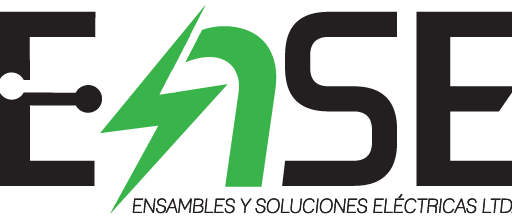Content

Additionally if the business were to buy treasury stock at a low price and then ideally sell it again at a higher price the differential between the cost of the stock and its selling price is not recorded as a gain. Instead this differential is recorded as an increase in the additional paid-in capital. The statement of shareholders’ equity helps the business plan the distribution of its profits. A business enterprise must make up-front decisions about the portion of profits that will be directed to retained earnings and the amount that will be distributed to shareholders. The total number of issued shares, as contained in the statement of shareholders’ equity, lets the company determine per share earnings for each accounting period. The statement of stockholder’s equity displays all equity accounts that affect the ending equity balance including common stock, net income, paid in capital, and dividends.
Can anyone help with creating a journal, creating a a Retained Earnings Statement and Statement of Changes in Stockholders Equity https://t.co/Kc19wiPY09 #essays #researchpapers #dissertations #casestudies #bookreviews #labreports #onlineclasses
— Elite Writing Geeks (@geeks_elite) October 6, 2020
This reverse capital exchange between a company and its stockholders is known as share buybacks. Shares bought back by companies become treasury shares, and their dollar value is noted in the treasury stock contra account. Note that the company had several equity transactions during the year, and the retained earnings column corresponds to a statement of retained earnings. Companies may expand this presentation to include comparative data for multiple years.
What Is a Statement of Stockholders’ Equity?
An example of this would be if WH3 Corp. had a 10% dividend on its stock then a stockholder who owns 100 shares of stock would be awarded the value 10 shares of new stock in the Corporation. The treasury stock business is the stock statement of stockholders equity that has been repurchased from investors. A business will sometimes buy back stock from investors for a few reasons one being to increase the earnings-per-share of the business by lowering the overall number of outstanding shares.
How do you prepare a statement of shareholders’ equity?
To prepare a statement of shareholders’ equity, you’ll need to ascertain the total assets and the total liabilities on your balance sheet. The statement will cover the equity at the beginning of the accounting period, new investments, subtractions through dividends and losses, and the final equity value at the end of the accounting period.
The most common dividend payout option is though either a cash or stock dividend. The simplest and quickest method of calculating stockholders’ equity is by using the basic accounting equation. The net result of this simple formula is stockholders’ equity.
Cash Flows from Investing Activities
The statement of stockholders’ equity is the difference between total assets and total liabilities, and is usually measured monthly, quarterly, or annually. It’s found on the balance sheet, which is one of three financial documents that are important to all small businesses. The other two are the income statement and the cash flow statement. The statement explains the changes in a company’s share capital, accumulated reserves and retained earnings over the reporting period. It breaks down changes in the owners’ interest in the organization, and in the application of retained profit or surplus from one accounting period to the next. Line items typically include profits or losses from operations, dividends paid, issue or redemption of shares, revaluation reserve and any other items charged or credited to accumulated other comprehensive income. It also includes the non-controlling interest attributable to other individuals and organisations.
It is divided into two separate accounts common stock and preferred stock. He equity of the shareholders is the difference between the total assets and the total liabilities. For example, if a company has $80,000 in total assets and $40,000 in liabilities, the shareholders’ equity is $40,000. A statement of shareholder’s equity is a financial document, which represents the value, worth of a company once their debts have been paid and their liabilities being taken care of.
Calculating Stockholders’ Equity
Certain statements and illustrations contained herein are forward-looking. This is typically the result of attempts to raise stock prices or to prevent takeovers from competitors.
- What you need to know about this portion of the balance sheet.
- The cash inflows are the cash amounts that were received and/or have a favorable effect on a corporation’s cash balance.
- These filings will help determine the total a number of authorized stocks, which will serve as the maximum number of shares that a corporation is allowed to print.
- All such information is provided solely for convenience purposes only and all users thereof should be guided accordingly.
- Retained earnings are defined as the net income that is earned by the business that has not been paid out to shareholders in the form of dividends.
- This is the date on which the list of all the shareholders who will receive the dividend is compiled.
Shareholders’ equity is reduced by the amount of money spent to repurchase the shares in question. If some journal entries must be written every month, it is helpful to assign journal entry numbers to these standard journal entries or recurring journal entries. For example, a company may designate JE33 (Journal Entry #33) to be the recurring accrual of expenses that have occurred but have not yet been recorded in Accounts Payable as of the end of a month. Perhaps the timeline/checklist will indicate that JE33 must be submitted by the accounts payable clerk six days after each month ends.
It’s also a useful tool for companies in helping them make decisions about future issuances of stock shares. If accounts payable decreased by $9,000 the corporation must have paid more than the amount of expenses that were included in the income statement.
- The dividend rate can be fixed or floating depending upon the terms of the issue.
- Shareholders’ equity is reduced by the amount of money spent to repurchase the shares in question.
- The statement of shareholders’ equity is a financial statement that shows the changes in a company’s equity over a period of time.
- If this figure is negative, it may indicate an oncoming bankruptcy for that business, particularly if there exists a large debt liability as well.
- This is usually one of the last steps in forecasting the balance sheet items.
As you read the previous paragraph, you may have been reminded of our discussion of adjusting entries. That’s because the adjusting entries are part of each period’s closing process. The adjusting entries are prepared in order to report a company’s revenues and expenses in the proper accounting period. In terms of payment and liquidation order, bondholders are ahead of preferred shareholders, who in turn are ahead of common shareholders. Where the difference between the shares issued and the shares outstanding is equal to the number of treasury shares. Shareholder equity is a company’s owner’s claim after subtracting total liabilities from total assets.

